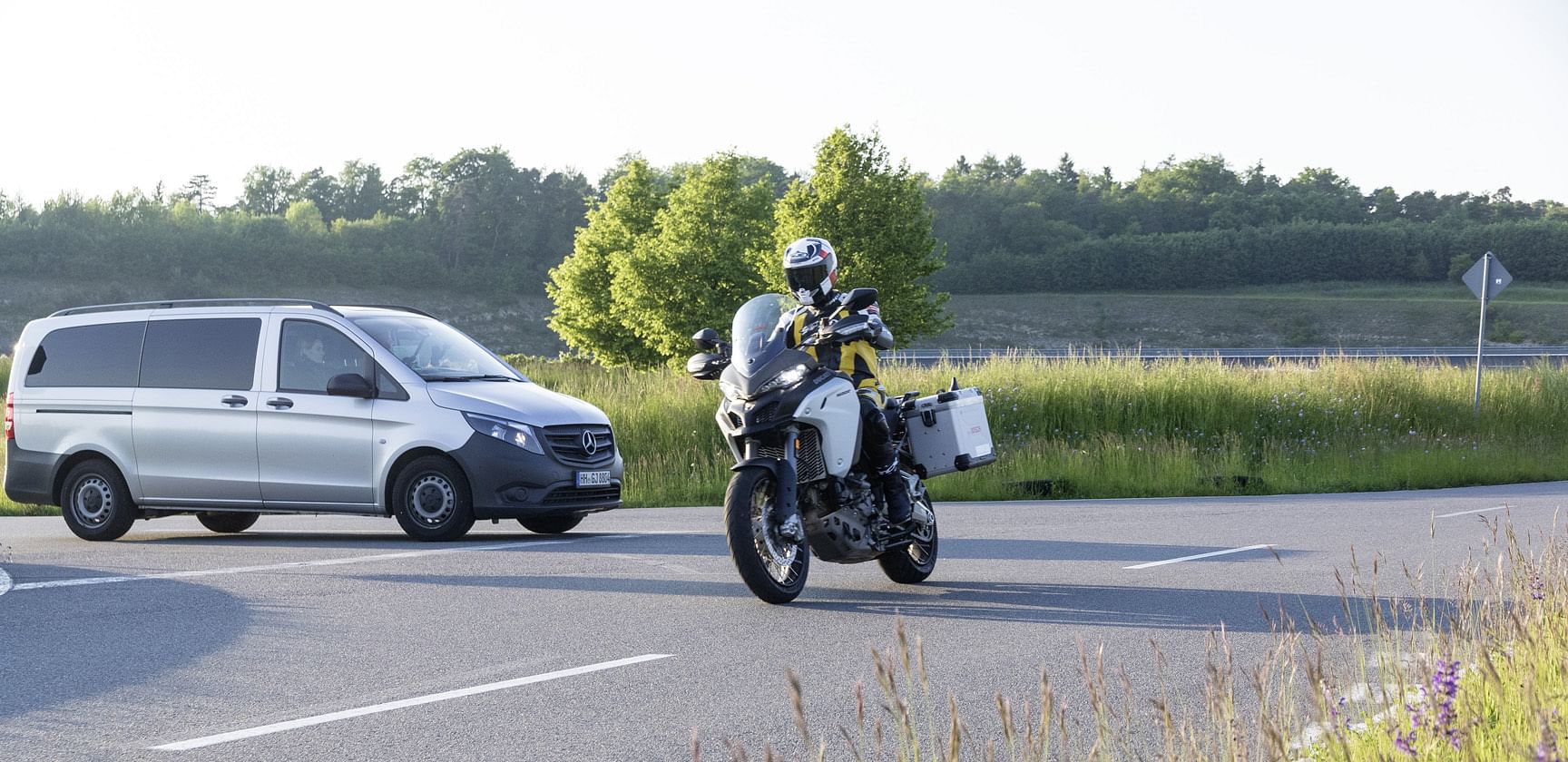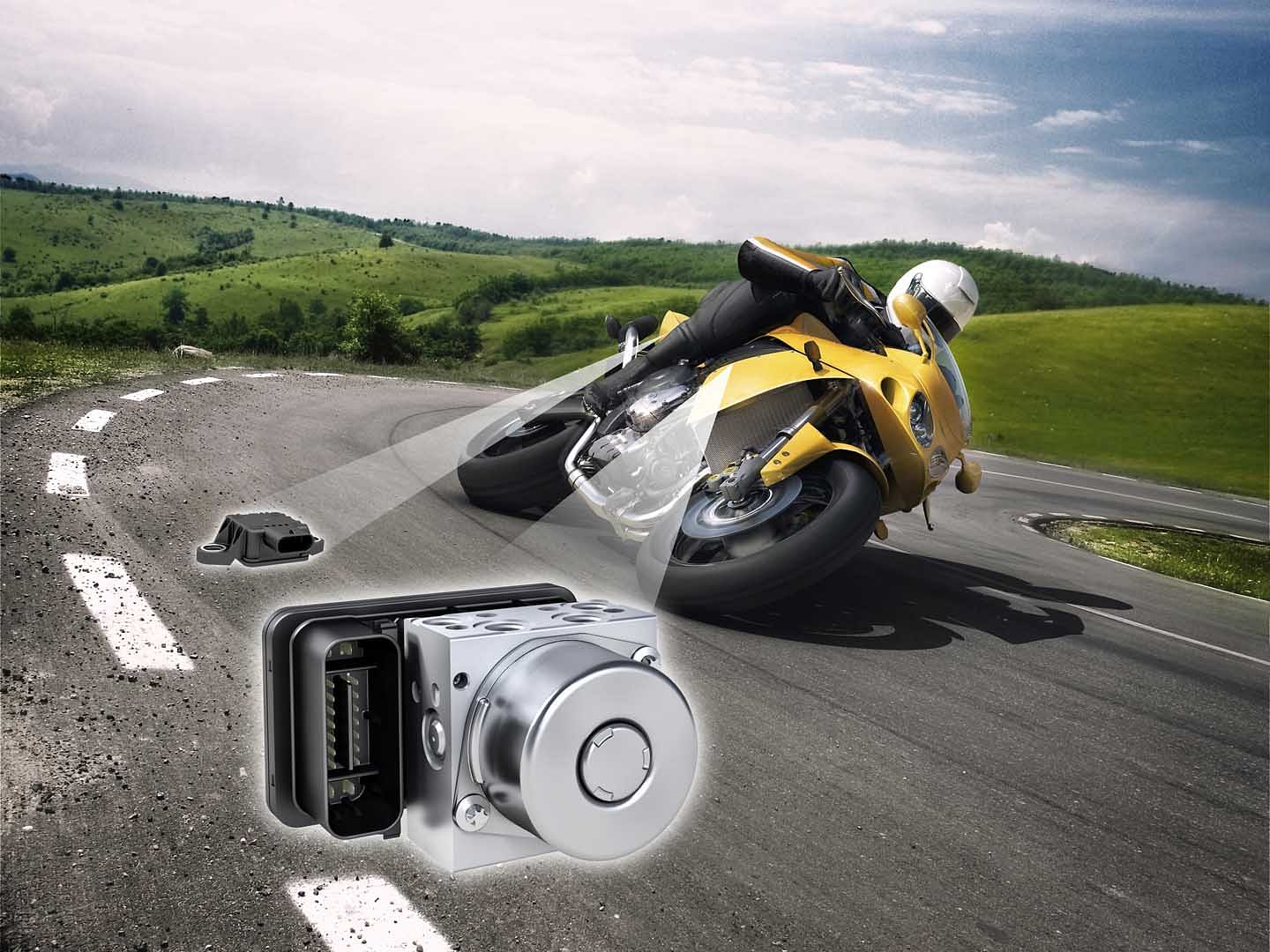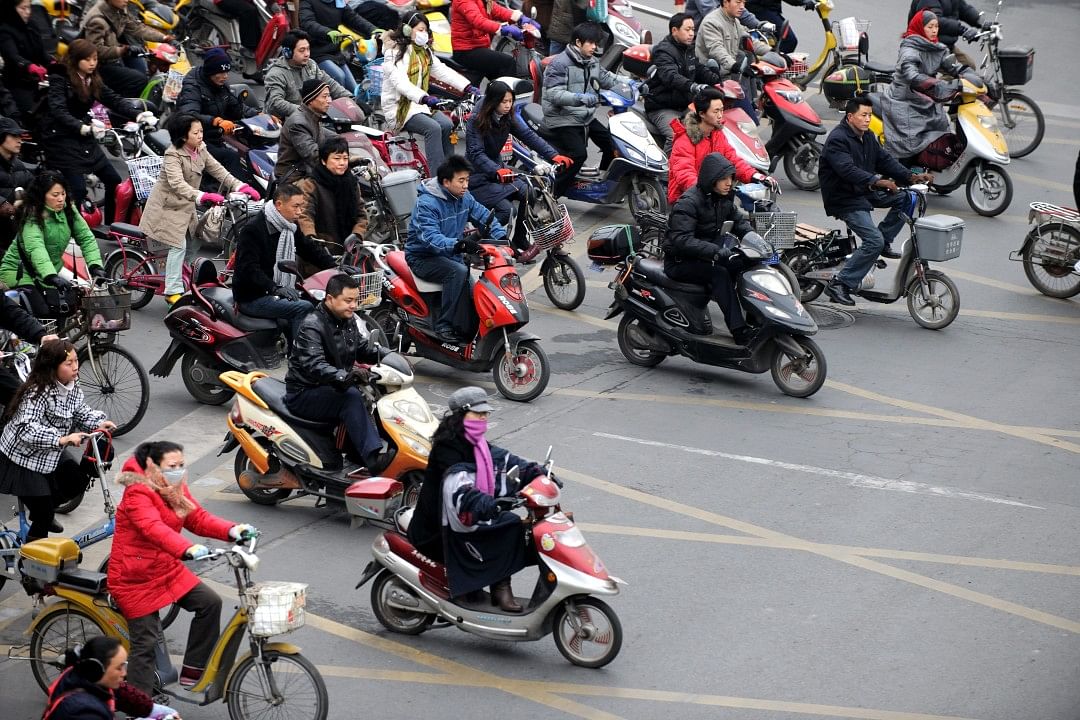Bosch bets big on new tech to enhance two-wheeler rider safety
The company, which is set to reach sales of one billion euros with motorcycle technologies, aims to make the motorcycle/scooter fit for the future by making it safer and the powertrain more efficient.
Components and technology supplier Bosch is bullish on the two-wheeler market of the future. The company, which is set to reach sales of one billion euros with motorcycle technologies, aims to make the motorcycle/scooter fit for the future by making it safer and the powertrain more efficient.
“Megatrends such as urbanisation and sustainability will fundamentally change mobility and the motorcycle as we know it today” says Dr. Dirk Hoheisel, member of the board of management of Robert Bosch GmbH. “Bosch’s vision is to make the mobility of the future accident-free, stress-free, and emissions-free – and this goes for motorcycles as well.”
Whether as a transportation option for the emerging mass markets or as an element of multimodal mobility in megacities, two-wheelers are increasingly in demand. In India, in FY2017, 17.36 million two-wheelers were sold. By 2021, the annual global production of two-wheelers is forecast to reach around 160 million units – one-third more than today.
This makes motorcycle technology a remarkable driver for business, a fact which the German supplier is well seized of. Bosch’s Two-Wheeler & Powersports business unit, based in Yokohama, Japan, continues to gain momentum in the important global motorcycle and powersports market. The business unit has registered sales growth of more than 20 percent compared to 2016 − twice as fast as the market. And by 2020, Bosch, which offers assistance systems, connectivity solutions, and modern powertrain and electrification systems for two-wheelers and powersport vehicles, is set to reach sales of one billion euros with motorcycle technologies.
Connectivity as a driver of safety
Like several automakers and suppliers, one of Bosch’s goals is to make riding accident-free. As a global supplier of motorcycle technology, the company has made motorcycle assistance systems such as ABS, MSC (motorcycle stability control), and side view assist a firm feature in developed market. Yet the possibilities for developing innovative technology for safer riding have by no means been exhausted: “Our vision for the future is to use connectivity to prevent accidents from happening in the first place,” says Hoheisel. “Technologies for automated and connected driving are taking the development of cars forward at an incredible pace; if motorcycles are to overcome the challenges related to future mobility, they need to have access to the same technology,” he adds.
For this reason, Bosch says it is creating connectivity systems that allow riders to communicate with vehicles, the infrastructure, and other road users in general, like the digital protection shield. It allows motorcycles and cars to talk to each other. Long before drivers or their vehicles’ sensors catch sight of a motorcycle, this technology informs them that a motorcycle is approaching, allowing them to adopt a more defensive driving strategy. Another solution which allows the rider to be connected and safe is the connected horizon; riders can look around the next bend and get advance warning of possible hazards. By 2025, more than 70 percent of newly registered motorcycles worldwide will be connected.

Bike-to-vehicle communication: Up to 10 times a second, vehicles within a radius of several hundred metres exchange information on details such as vehicle type, speed, position, and direction of travel. Long before drivers or their vehicles’ sensors catch sight of a motorcycle, this technology informs them that a motorcycle is approaching, allowing them to adopt an appropriate driving strategy. A communication technology similar to the public WLAN standard (ITS G5) is used as the basis for the exchange of data between motorcycles and cars. Transmission times of just a few milliseconds between transmitter and receiver mean that participating road users can generate and transmit important information relating to the traffic situation.
Integrated connectivity cluster: The integrated connectivity cluster is an all-in-one rider information and communication system developed especially for motorcycles and powersport vehicles. It allows riders to connect their bike to their smartphone via Bluetooth. The integrated connectivity cluster went into production in the BMW R 1200 GS in 2017.
In cooperation with BMW, a newly added navigation function is available for riders. Especially in urban areas, this new feature enhances riders’ convenience as well as their safety. In addition to the navigation feature, BMW’s integrated connectivity cluster offers two functions that make riding more convenient and enjoyable. It enables riders not only to receive calls, but also to make them, and allows them to easily access their contact lists and recent calls. Moreover, riders can use the ergonomically designed controls on the handlebar to effortlessly access their music favorites stored on their smartphones. The integrated connectivity cluster’s intuitive interface and innovative technology make it easy to read in all situations, and allows riders to focus on enjoying their ride.
Lean connectivity unit: The lean connectivity unit is an optimised connectivity solution enhancing the safety and convenience of motorcycle riders. It was designed especially for emerging markets. If the rider has an accident, the device automatically detects the accident and uses the lean connectivity unit app to send an emergency message containing the rider’s location information to the emergency contacts stored on the rider’s smartphone.
In situations in which the rider feels insecure, the handlebar remote control can be used to send an emergency message with location information to the same emergency contacts. Furthermore, the system also protects vehicles against theft by using the smartphone as an additional key. Telephone functions are available as well, allowing the rider to answer or reject incoming calls directly via the handlebar remote control. When riding with friends, the lean connectivity unit permits the riders to track their location or estimated arrival time. Thanks to CAN communication, it is possible for motorcycle manufacturers to realise additional value-added functions such as remote diagnostics that increase riders’ convenience.
Motorcycle ABS: Since 1984, Bosch has been continuously perfecting motorcycle ABS technology. Its smaller, lighter design with enhanced performance increases riding safety for riders worldwide. According to a study by Bosch accident research, around one-quarter of all powered two-wheeler accidents in Germany and India could have been prevented by ABS.

Worldwide, an increasing number of countries, such as the European Union, Japan, Taiwan, and Brazil are or will soon be mandating motorcycle ABS. In the middle of 2018, motorcycle ABS will be mandatory in India for all new vehicle types with an engine displacement above 125cc. This Indian legislation many possibly influence other emerging markets, such as Indonesia and Thailand, where small two-wheelers are also the most important means of transportation. Bosch’s smaller and lighter ABS 10 is designed specifically to meet the requirements for two-wheelers in emerging markets such as India, Indonesia, and Thailand.
Motorcycle stability control (MSC): MSC motorcycle stability control is the world’s first all-in-one safety system for two-wheelers. By monitoring two-wheeler parameters such as lean angle, the system can instantaneously adjust its electronic braking and acceleration interventions to suit the current riding status. In this way, the Bosch system can prevent motorcycles lowsiding or righting themselves when braking in bends, which is the cause of the majority of motorcycle accidents.
The new Bosch 6D sensor, which features benchmark signal performance, and vibration robustness, will be integrated in the MSC system in the near future. It will go into production in 2018. This sensor unit is the smallest and lightest design on the market. Capable of handling any sensor orientation in the vehicle, it significantly improves mounting flexibility.
Value-added functions: Bosch is using its motorcycle ABS and motorcycle stability control (MSC) as the basis for realizing value added functions. These are programmed into the ABS and MSC units by means of smart algorithms. The latest example of a value-added function for motorcycles to emerge from Bosch is its ‘side-slip angle control’, which enhances the performance of dynamic vehicle control in all riding situations. By analyzing two-wheeler-specific key data such as lean-angle, vehicle side-slip angle, and deceleration, the system adjusts brake pressure to increase vehicle stability and braking performance. A ‘dynamic slide control’, which uses the vehicle’s side-slip angle information, is used to allow and control a certain rear wheel slide during hard braking. The function is designed especially for race-track use, and will go into production with the new Ducati Panigale V4 in 2018.

Eyeing the EV market
Bosch is also eyeing demand in the electric two-wheeler space. In the years to come, the market for light electric vehicles like eScooters is expected to grow by about 40 percent. Studies indicate that some 100 million such vehicles will be manufactured worldwide by 2020. “Electromobility will take off much more rapidly in small-vehicle segments. Small electric vehicles have a bright future, worldwide,” says Hoheisel.
Bosch has developed scalable powertrain systems that enable the electrification of light vehicles on four-, three-, or two wheels, such as the Govecs eSchwalbe or the AIMA eScooter. The systems comprise a motor, control unit, battery, charger, display (HMI), and connectivity box, as well as an interactive app that connects the rider’s smartphone with the vehicle.
Bosch’s electrified powertrain solutions are scalable across all performance classes between 0.25 and 20 kW. Vehicle manufacturers benefit from a comprehensive systems solution that can be quickly integrated, and that also means less development effort. This reduces complexity, variants, and cost – for manufacturers and thus also for anyone who wants to drive electrically through their city. One further advantage: the small vehicles not only reduce emissions, but noise as well.
While Bosch is stepping up its efforts related to electrified mobility, it is also continuing to improve the combustion engine with electronic engine management solutions. These allow two-wheelers and powersport vehicles to satisfy the latest emissions regulations, such as Euro 5 and BS VI (Bharat Stage emission norms in India), and can reduce CO2 emissions, while still meeting the demand for the latest functionalities and improved performance.
RELATED ARTICLES
Volvo Cars signs recycled steel supply pact with SSAB
The recycled steel will be used in selected components of the forthcoming, fully electric EX60 SUV, as well as other car...
Schaeffler and NVIDIA ink technology collaboration to advance digital manufacturing
Using NVIDIA Omniverse, Schaeffler is expanding its production elements, which will be integrated and simulated as digit...
BMW Group to industrialise Virtual Factory, slash production planning costs
What once required several weeks of real-world modifications and testing can now be precisely simulated in the BMW Group...





 By Autocar Professional Bureau
By Autocar Professional Bureau
 06 Nov 2017
06 Nov 2017
 9724 Views
9724 Views


























